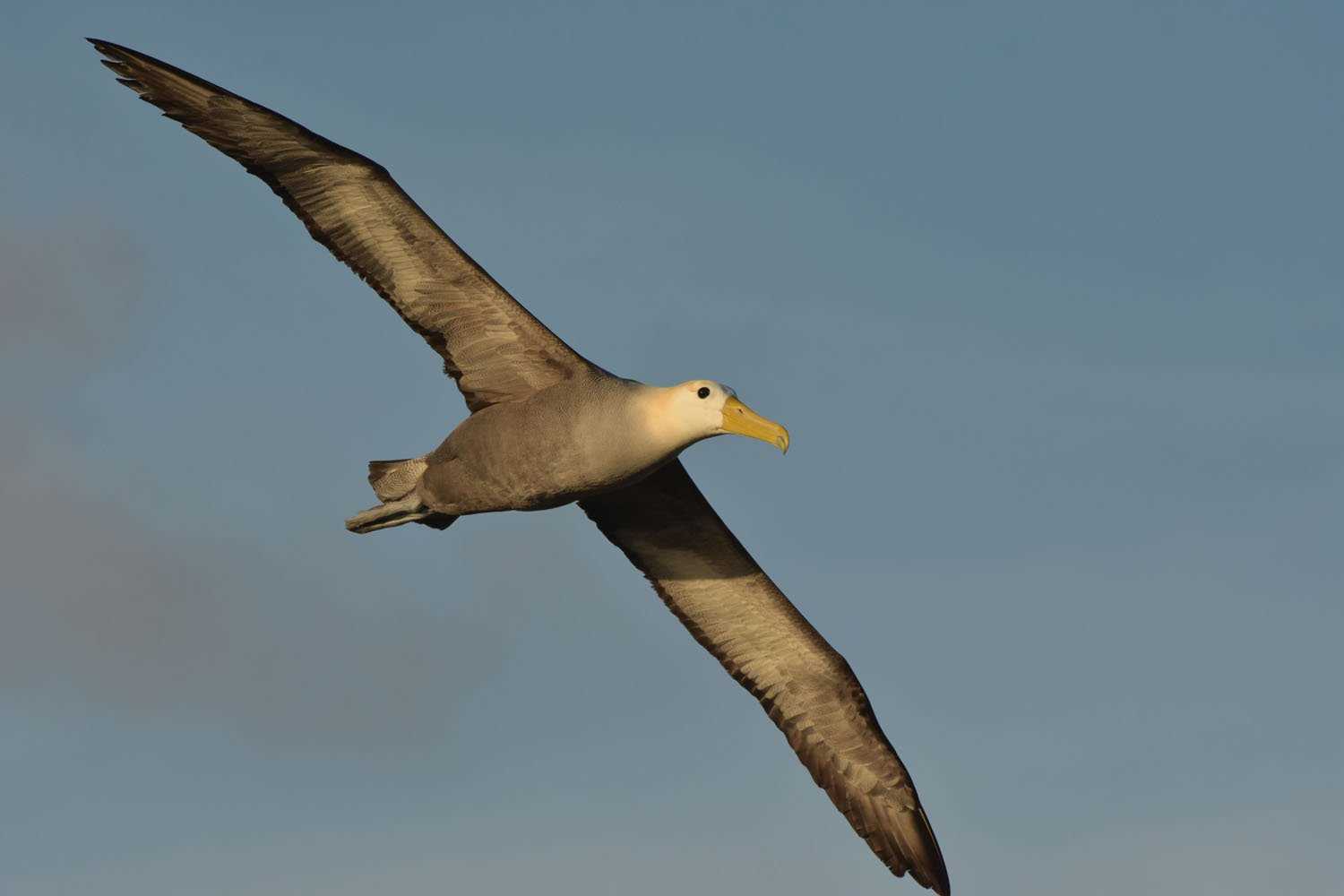Española, or Hood Island, is the oldest islands in Galapagos, at approximately 4 million years of age. Although it’s an old island, if you compare its age to the age of the planet itself, which is around 6.4 billion years, we can still describe Española as a young formation. The long history of this island has given species more time to evolve in isolation. As we started to walk among the lava we could see that erosion had converted the old lava flows into boulders. The strenuous walk took us to the nesting ground of the waved albatross, one of the part time inhabitants of this place.
As we landed on the island, it was amazing to see how many baby sea lions had been born in the last few days. Babies were just everywhere, some were with their mothers and some had just been left behind, as their mothers had gone into the ocean to fish. These babies are very demanding at this age when it comes to nursing, so the females normally leave the babies on the beaches while they go out to look for fish.
The albatross have chosen this particular island because of the cliffs, which provide an excellent jumping off point from which they can take off—being oceanic, they are big and need the help of the wind to successfully launch. The mockingbird of Española is one of the four types of mockingbird present in the archipelago, and they are one of the species that got Darwin’s attention back in 1835. He collected three out of the four variations, noticing how they have some physical differences, and he noted: “there is a difference between the inhabitants of the different islands…”
As we continued to hike along the trail, we had a chance to see the entire breeding cycle of the Nazca boobies, couples courting, couples making a nest, couples preening each other, parents feeding chicks and independent chicks defying hawks—the older chicks are very bold, because know that they are too big to be eaten anymore.
As we returned to the National Geographic Endeavour at sunset time, with a deeper understanding of the necessity of conserving these fragile ecosystems, not only for us to see, but for the animal species that belong here, the true owners of the islands.









